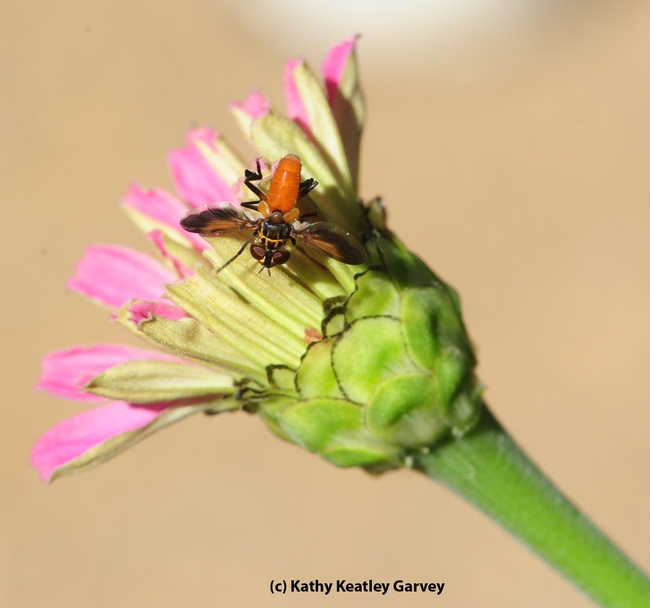- Author: Kathy Keatley Garvey
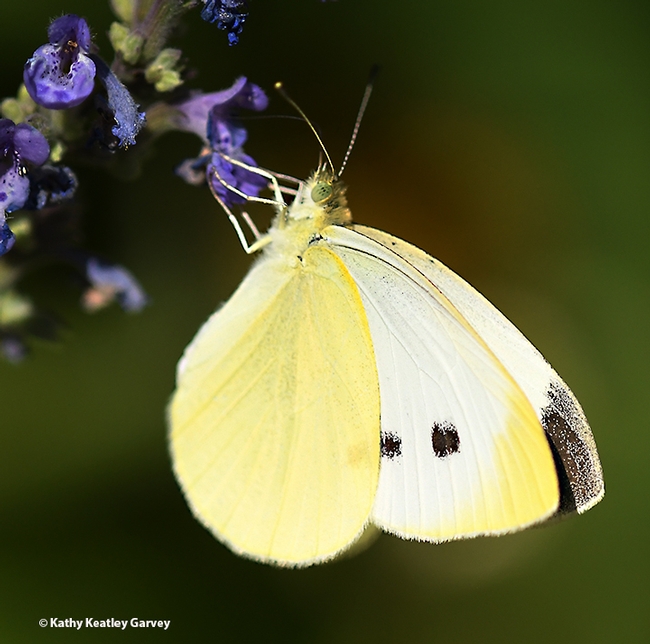
Throughout the year, we haven't been seeing this species, Pieris rapae, much--and neither has Art Shapiro, UC Davis distinguished professor of evolution and ecology who has been monitoring all the butterfly populations of the Central Valley since 1972. Usually, cabbage whites are quite prevalent. (See his research website.) As you may remember, he sponsors the annual "Beer-for-a-Butterfly Contest." The first person to collect the first cabbage white of the year--in Yolo, Sacramento or Solano counties--receives a pitcher of beer or its equivalent. It's all for scientific research; he's studying the first flights of this species.
But back to the two cabbage whites fluttering in our garden. One seemed quite interested in the other. A suitor?
In one image (below), they both raised their abdomens.
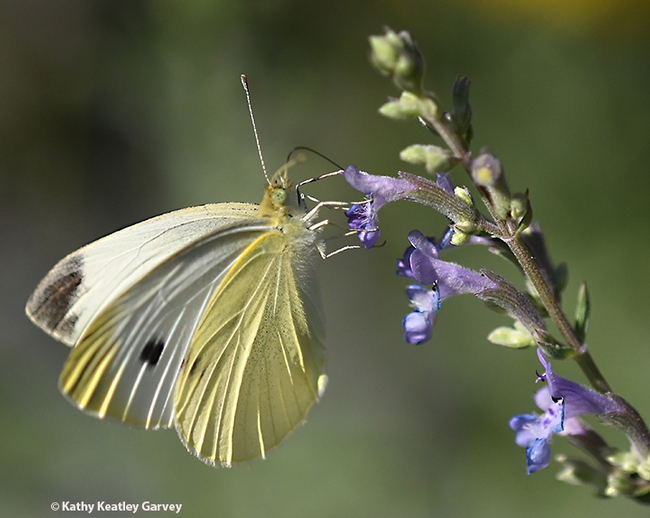
The cabbage white butterfly is also known as the European cabbage butterfly. Shapiro provides interesting information on his website about this species:
"Our only introduced butterfly--from the Old World--this is also one of our weediest, occurring in disturbed habitats from sea level to about 8000.' It even invades riparian woodland and montane coniferous forest habitats in summer. We are not certain how or when it reached our area. We know the species was introduced in southern Canada in the 1850s; the great Lepidopterist Samuel H. Scudder traced its spread, but was unable to resolve the history on the West Coast. It was not in San Francisco in the early 1880s, but was abundant by the time of the earthquake (1906). There is a mysterious specimen sent by the early collector Lorquin to Tryon Reakirt in Philadelphia, which may have been collected at Yreka in Gold Rush days. Was there an early introduction by the Spanish during the Mission Period?"
"In a typical year, after overwinter mortality, numbers of this species rise rapidly to a peak in late spring, exploiting almost unlimited quantities of host plants (weedy mustards). Then all the annual hosts (Brassica and Raphanus) die off by the 4th of July, and the butterfly is forced to contract down to local pockets of hosts that remain green in summer--cultivated Crucifers and Nasturtiums, the perennial mustard Hirschfeldia incana, and the aggressive weed Tall White-Top or Perennial Peppergrass, Lepidium latifolium. This last plant has invaded the western Great Basin, producing virtual monocultures along the Truckee River and other watercourses, and spreading the butterfly into areas where it had been rare or absent not so long ago."
Agriculturists probably wish the cabbage white butterflies would be more absent, as the larvae, known as "imported cabbageworms," are pests of crucifer crops such as cabbage, kale, bok choy and broccoli. (See the Pest Management Guidelines on the UC Statewide Integrated Pest Management website.)
As for the two in our garden this week, the female lingered for a little more nectar. The male butterfly fluttered silently away.
Rejection. Rejection in the butterfly world.



- Author: Kathy Keatley Garvey

That would be the cabbage white butterfly, Pieris rapae.
Its larvae or cabbageworms are pests of our cole crops, including cabbage, kale and mustard.
Pests? You bet.
According to the UC Statewide Integrated Pest Management (UC IPM) Program, the caterpillars "feed voraciously on both the outer and inner leaves, often feeding along the midrib, at the base of the wrapper leaves, or boring into the heads of cabbage. After 2 to 3 weeks of feeding, larvae pupate attached by a few strands of silk to stems or other nearby objects; pupae are green with faint yellow lines down the back and sides; there is no spun cocoon. The adult cabbage butterfly is white with one to four black spots on the wings; they are often seen fluttering around the fields. The whitish, rocket-shaped eggs are laid singly on the undersides of leaves."
Furthermore, UC IPM points out in its Pest Management guidelines, "the cabbageworm is active throughout the year in California."
So, what good are they?
Well, National Public Radio says we should thank them. In a piece titled "Why You Should Thank A Caterpillar For Your Mustard And Wasabi," NPR author Jessica Rack relates that the caterpillars are responsible for the exquisite, pungent taste of wasabi and mustard. Basically, they are the engine that drives the plants to make the chemicals in these substances that we find so tasty.
Scientists published their work this month in Proceedings of the National Academy of Sciences. Plant evolutionary biologist Chris Pires of the University of Missouri, a lead author of the study, compared the evolution of taste to a military arms race or what Rack described as "repeated escalations to have better weapons or defenses — but on an epic timescale."
"In this case, the opposing armies are caterpillars of the cabbage butterfly and plants in the order Brassicales, which today includes cabbage, horseradish, kale and mustard," wrote Rack.
Ironically, in another paper, this one published Aug. 10 in the journal, Nature Climate Change, scientists are worried that the cabbage white butterfly might go extinct in the UK because these are drought-sensitive butterflies. The paper, titled "Interacting Effects of Climate Change and Habitat Fragmentation on Drought-Sensitive Butterflies," should draw a lot of attention.
Pieris rapae already does in central California. Butterfly expert Art Shapiro, distinguished professor of evolution and ecology at the University of California, Davis, annually conducts a contest involving the cabbage white. The first person to find the first cabbage white of the year in the three county area of Sacramento, Yolo and Solano wins a pitcher of beer. A beer for a butterfly.
The contest, launched in 1972, is all part of Shapiro's four-decade study of climate and butterfly seasonality. “It is typically one of the first butterflies to emerge in late winter. Since 1972, the first flight has varied from Jan. 1 to Feb. 22, averaging about Jan. 20.”
(Editor's Note: Like Bug Squad on Facebook)
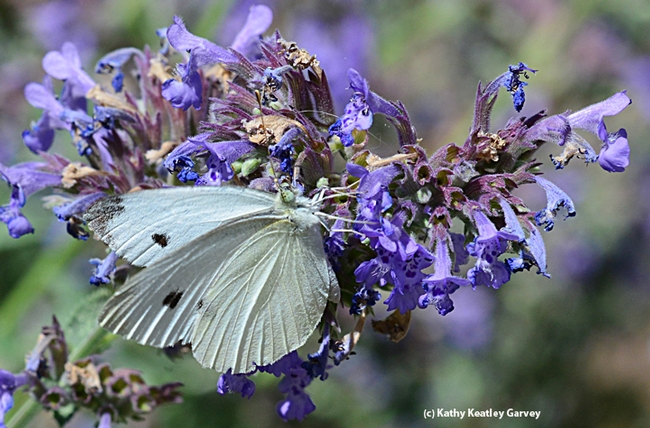
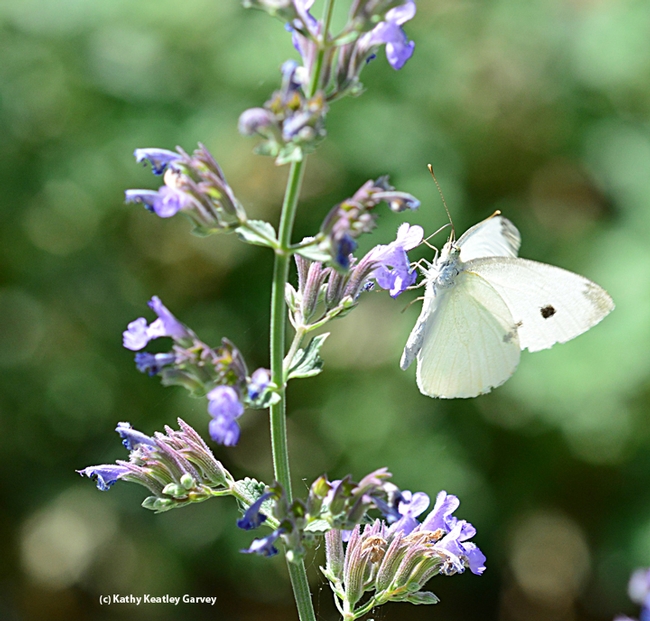
- Author: Kathy Keatley Garvey
If you're craving to find out more about insects--specifically how to FIND them--then you'll want to attend the Bohart Museum of Entomology’s open house from 1 to 4 p.m., Sunday, June 9.
It's free and open to the public.
Insects aren't difficult to find in the Bohart Museum, which is located in Room 1124 of the Academic Surge building on Crocker Lane, UC Davis. After all, the museum houses nearly eight million specimens.
You'll also be able to find them outside. You'll learn how to net and trap insects at a demonstration site at the side of the building.
Another highlight will be how to rear cabbage white butterflies. You'll be given a free pamphlet on how to rear cabbage whites. Many classroom teachers try to rear monarch butterflies, but there's a growing movement to raise cabbage whites instead. After all, cabbage whites are more abundant, easily obtained and quite easy to rear. Their host plants include cabbage, broccoli, kale, cauliflower and mustards.
The transformation of an egg to a caterpillar to a chrysalis to an adult can not only be witnessed in the classroom, but at your home as a family project.
At the open house, you can also hold such live specimens as Madagascar hissing cockroaches and walking sticks. The gift shop (which now accepts credit cards) includes t-shirts, jewelry, insect nets, posters and books, including the newly published children’s book about California's state insect. “The Story of the Dogface Butterfly,” a 35-page book geared toward kindergarteners through sixth graders, was written by UC Davis doctoral candidate Fran Keller and illustrated (watercolor and ink) by Laine Bauer, a 2012 graduate of UC Davis. It also includes photos by naturalist Greg Kareofelas of Davis, a Bohart Museum volunteer. Net proceeds from the sale of this book go directly to the education, outreach and research programs of the Bohart Museum. The book also can be ordered online.
This is the last of the open houses for the 2012-13 academic year. Bohart officials schedule weekend open houses throughout the academic year so that families and others who cannot attend on the weekdays can do so on the weekends. The Bohart’s regular hours are from 9 a.m. to noon and from 1 to 5 p.m., Monday through Thursday. The insect museum is closed to the public on Fridays and on major holidays. Admission is free.
The Bohart Museum, directed by Lynn Kimsey, professor of entomology at UC Davis, is the seventh largest insect collection in North America. It is also the home of the California Insect Survey, a storehouse of the insect biodiversity. Noted entomologist Richard M. Bohart (1913-2007) founded the museum in 1946.
For further information, contact Tabatha Yang, education and outreach coordinator at tabyang@ucdavis.edu or (530) 752-0493.
